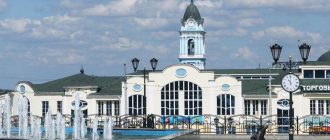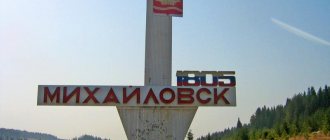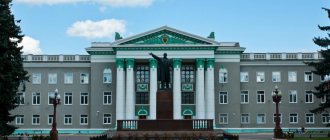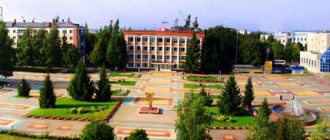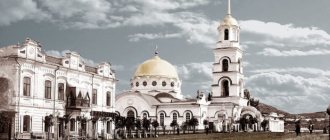City in Moscow, Russia
| Shcherbinka Shcherbinka | |
| Town | |
| Flag Coat of arms | |
| Shcherbinka within the federal city of Moscow | |
| Location of Shcherbinka | |
| Shcherbinka Location of Shcherbinka Show map of Russia Shcherbinka Shcherbinka (Moscow) Show map of Moscow | |
| Coordinates: 55°30′N 37°34'E / 55.500°N Latitude 37.567°E / 55.500; 37.567Coordinates: 55°30′N 37°34'E / 55.500°N Latitude 37.567°E / 55.500; 37.567 | |
| A country | Russia |
| Federal subject | Moscow[1] |
| Based | late 14th century |
| City status from | 1975 |
| Height | 170 m (560 ft) |
| population (2010 Census)[2] | |
| • General | 32,450 |
| • Evaluate (2018)[3] | 51,036 (+57.3%) |
| Administrative status | |
| • Subordinate | Novomoskovsk administrative district[1] |
| Timezone | UTC + 3 (MSK [4]) |
| Postal code(s)[5] | 142100 |
| OKTMO I WOULD | 45932000 |
Shcherbinka
(Russian: Shcherbinka) is a town, formerly in the Moscow region, Russia, and since July 1, 2012, part of the federal city of Moscow, Russia. It is located 37 kilometers (23 miles) south of the city center. Moscow. Population: 32,450 (2010 Census);[2]28,043 (2002 Census);[6]28,011 (1989 Census).[7]
Recommendations
Notes
- ^ a b c
On the territorial division of the city of Moscow (amendments have been made) (in Russian). Moscow City Duma. Archived from the original July 29, 2012. Retrieved July 8, 2012. - ^ a b
Federal State Statistics Service of Russia (2011).
“All-Russian Population Census 2010. Volume 1" [All-Russian Population Census 2010, vol. 1]. All-Russian Population Census 2010 [All-Russian Population Census 2010]
(in Russian). Federal State Statistics Service. - "26. The size of the permanent population of the Russian Federation by municipalities as of January 1, 2022.” Federal State Statistics Service. Retrieved January 23, 2022.
- "On the calculation of time." Official Internet portal of legal information
(in Russian). June 3, 2011. Retrieved January 19, 2022. - Post office. Information and computing center of OASU RPO. ( Post office
).
Search for postal facilities ( Search for postal facilities
) (in Russian) - Federal State Statistics Service of Russia (May 21, 2004). > [Population of Russia, its federal districts, federal subjects, districts, urban settlements, rural settlements - administrative centers, rural settlements with a population of more than 3000 people] (XLS). All-Russian Population Census of 2002 [All-Russian Population Census of 2002]
(in Russian). - “All-Union Population Census of 1989. The actual population of the union and autonomous republics, autonomous regions and districts, territories, regions, urban settlements and villages. On the administrative-territorial structure of the Moscow region.” Came into force on the date of official publication. Published: “Podmoskovnye Izvestia”, No. 20, February 1, 2001 (Moscow Regional Duma. Law No. 12/2001-OZ of January 17, 2001 On the administrative-territorial structure of the Moscow Region
As amended by Law No. 105 of July 17, 2012) 2012-OZ.
On amendments to the Law of the Moscow Region “On the administrative-territorial structure of the Moscow Region”.
Valid from the date of official publication.). - Moscow Regional Duma. Law No. 54 / 2005-OZ of February 25, 2005 “On the status and border of the Shcherbinka urban district,” as amended. Law No. 92 / 2011-OZ of June 24, 2011 “On amendments to the Law of the Moscow Region “On the status and border of the Shcherbinka urban district””. Came into force on the date of official publication. Published: “Daily News. Moscow Region”, No. 40–41, March 5, 2005 (Moscow Regional Duma. Law No. 54/2005-OZ of February 25, 2005. On the status and border of the Shcherbinka urban district
As amended by Law No. 92/2011- dated June 24, 2011 OZ.
On amendments to the Law of the Moscow Region "On the status and border of the Shcherbinka urban district"
. Valid from the date of official publication.).
Shcherbinka
origin of name
Legend has it that at the beginning of the 19th century, on the site of modern Shcherbinka, the Militsa village and the Lipki tract, there was an estate of the wealthy landowner Shcherba. The owner of the estate mortgaged the village for his serfs. The settlement consisted of only seven courtyards. When the peasants were asked who their owner was, they invariably answered: “We are Shcherbins.” Thus, the village received the name Shcherbinka.
Shcherbinka village
The landowner Shcherba was forced to flee his possessions in 1812, when Napoleon's troops approached Moscow. Shcherba buried all his valuables near the ponds and never returned to his estate. Shcherba's possessions began to be passed from hand to hand.
In the 1860s, N. O. Sushkin became the owner of the estate. His family owned these lands until the revolution. Sushkin became rich thanks to usury. He had many properties near Shcherba's estate. The moneylender used his new estate as a productive subsidiary plot. Sushkin did not live permanently in Shcherbinka. He liked to spend only the summer months in the village. Thanks to the proper organization of farming, Shcherbinka becomes comfortable and profitable.
After the abolition of serfdom in 1861, each peasant living in Shcherbinka received one tithe of land per capita. A total of 85 acres. Peasant tithes formed the basis of the lands of the modern city. The master's part of the estate was rebuilt in accordance with the needs of the owners. By order of the new owner, a large orchard was planted, which later became a source of good income for Sushkin. In the 1870s, a railway line connecting Kursk and Moscow appeared near the village. Initially there was no station near Shcherbinka. There was only a small barracks for railway workers. The train could stop near this barracks upon request. In 1890, Sushkin received permission to build a station called the Shcherbinka Platform. The manufacturer Baskakov, whose enterprise was located three miles from the railway line, helped Sushkin get permission.
When the station was built, it turned out that it was separated from the railway by a strip of peasant land. Sushkin bought their land from the peasants and built a highway in the European style, connecting the estate and the station. Only the owner and his guests had the right to use the road. To prevent peasants from using the road, barriers were installed at both ends. In 1912, peasants asked Sushkin for permission to travel along the road. However, the moneylender was afraid that the peasant Savraskas might ruin the road surface, and did not give permission, installing another barrier.
A small brick production enterprise was built not far from the village of Shcherbinka. At the beginning of the twentieth century, this enterprise was purchased by a company that was planning to open its own factory in Podolsk. However, the Shcherbinsky brick factory was soon resold. The new owner was entrepreneur V. Belousov. The entrepreneur significantly expanded production by carrying out some repairs and updating equipment. The enterprise, however, continued to remain semi-handicraft. Next to the plant there were barracks for workers and a small one-story house. In one half of it there was an office of the enterprise, and in the other Belousov lived.
After the revolution
Before the revolution of 1917, there were only 17 households in Shcherbinka. The settlement could not be seen on any large-scale map. All Shcherbinsky lands came under the subordination of the Zakharyevsky village council formed after the revolution, which, in turn, was subordinate to the Sukhanovsky executive committee of the Podolsk district. Shcherbinka began to grow rapidly thanks to its settlement by railroad workers. They appealed to the authorities with a request to allocate them land plots in this territory. The railway workers were allocated a plot of land not far from Zakharyevsky parish, called Popova Grove. The railway workers were obliged to independently cut down the forest located here and hand it over for state needs.
The construction of the railway workers' settlement began on the site where Zheleznodorozhnaya Street is located today. In 1918, the new government nationalized Belousov's enterprise. The brick factory was transferred to the jurisdiction of Podolsk local industry. On the territory of the landowners Druzhinins, located next to Shcherbinka, an experimental demonstration farm was built, in which they raised Kholmogory cattle. In the manor's estate they made a rest house for workers of the Executive Committee of the Comintern. In 1918, all the property of the Sushkin family was also nationalized. The moneylender's heir lived on the estate with his wife and was famous for his liberal views. He did not interfere with nationalization and left the estate 2 days after he was deprived of his property.
The development of Shcherbinka continued only after the civil war. In 1928, not far from Belousov’s old enterprise, construction began on a new brick factory at the Raipromkombinat. Seasonal workers were hired to build the enterprise. The first stage of the plant came into operation in the same 1928. The forest located on the territory of the future plant was cut down. A workers' settlement grew up behind the enterprise. After some time, the “Glue-Soap” factory was built. However, this enterprise did not last long. It poisoned the soil and air with industrial waste. In 1938, “Glue-Soap” was closed. In its place appeared the Shcherbinsky Stamping and Mechanical Plant. In the early 30s, not far from the railway platform, construction began on the Experimental Ring of the Central Research Institute of NKPS. Construction was completed in 1932.
At the end of the 30s, electrification of the Moscow-Podolsk railway line began. Many railway workers decided to settle in Shcherbinka. The All-Union Trust for the Construction of Extracurricular Bridges NKPS (Mostotrest) appeared in the village - one of the largest developers in the country. The first two-story standard houses appeared along the Serpukhov highway. This is how the village of Mostotrest was built. Until the early 40s, 3 houses were inhabited. The railroad also built housing for its employees. The lands of the Shcherbinsk artel were alienated. In return, the artel received a land plot of 68 hectares, which belonged to the subsidiary farm “Colony named after May 1st”. At the end of the 30s, reconstruction work was carried out in Moscow. In this regard, many residential buildings were demolished due to the high degree of wear and tear. The people who lived in them were moved to a new residential area in the vicinity of the village of Shcherbinka. Thus, by the end of the 30s, a large settlement was formed. In December 1938, Shcherbinka received the status of a workers' village.
Workers' village
In 1939, the village planning project was approved. Since the next batch of settlers was to be transported from the capital, the development of the project was completed by the summer of 1939. The allocation of plots for individual construction began. In the same year, a new district of the village was founded, called Novomoskovsky. Several land plots were also allocated for the construction of summer cottages for employees of the 1st State Bearing Plant. Thus, another new district appeared - Shariki. Then the Ordzhonikidze district appears. The Podolsk backwater named after Ordzhonikidze has submitted an application to receive land plots for the construction of individual houses for its employees. The center of the village was located in the area of the brick factory, since more than seven thousand people already lived there. In total, more than eleven thousand people lived in Shcherbinka.
In addition to residential buildings, the village needed a significant number of social facilities: schools, a fire station, shops, etc. Construction in Shcherbinka was hampered by the local fatty clay soil. After a little rain, it was impossible to move around the village either by transport or on foot.
The Great Patriotic War
Construction in Shcherbinka was suspended during the Great Patriotic War. In the fall, the village found itself in the front-line zone, as the fascists breaking through to the capital came very close to Podolsk. The boundaries of the Moscow defensive belt passed through Shcherbinka. The population of the village was reduced by almost half. Most of the men living in Shcherbinka were mobilized to the front. Entire apartments were empty in the villages, where Red Army units eventually settled. In December 1941, the brick factory stopped its work, resuming it only in 1943. The stamping plant, which began operations in 1938, worked only for the needs of the front during the war years. Due to the proximity to the front and lack of fuel, the remnants of the forest were cut down in the village, as well as in the vicinity of Shcherbinka. The parks and gardens of former landowners' estates suffered greatly from deforestation.
Post-war years
In the post-war years, construction in Shcherbinka resumed. In the center of the village, the construction of comfortable three- and four-story houses began. New buildings appeared on Teatralnaya Street. A House of Culture was built on the square. The construction was financed by the Refractory Plant. Thanks to his investments, medical institutions and shops appeared in the village, and events were also carried out to improve Shcherbinka. The Central Research Institute of Ministry of Railways also provides no less assistance in construction. With the help of the institute’s investments, three- and four-story houses, communications and a huge number of social facilities were built in the village. The institute was also involved in the development of microdistrict No. 2 and a large vacant lot between the Northern (Lublinsky) and Central (Kirpichny) microdistricts. Previously, this wasteland was used by residents of the village as a potato field.
In the early 50s, the Main Repair and Restoration Train No. 1 of the Ministry of Railways (GOREM-1), which was a construction organization for railway workers, arrived in the village. In the Lyublinsky microdistrict, 6 two-story wooden, 17 two-story eight-apartment houses, 1 five-story and 3 four-story houses were built in the shortest possible time. An artesian well was laid especially for the village, a large boiler house, a water tower, a steam pipeline, sewerage and water communications were built. The Moscow-Kursk (today – Moscow) railway played a huge role in the development of the village. Having completed the construction of eight-apartment buildings, the railway workers moved on to the construction of four-story housing. Then they built their own boiler house, which provided residential buildings with heat, water and sewerage.
In the early 50s, construction of a town for Moscow policemen began on the territory of the subsidiary farm. Initially these were wooden houses. Then permanent buildings appeared. In the mid-50s, Geologonefterazvedka was allocated empty land plots for the construction of another city-forming enterprise. In those same years, an elevator manufacturing plant appeared in the village. The improvement of Shcherbinka began in the second half of the 50s. Lanterns appeared on the streets, roads were paved. In the early 60s, construction of an automatic telephone exchange began. Soon telephones appeared in many Shcherbinka houses. In 1962, the first five-story panel residential building was erected on Sadovaya Street.
City status
By the mid-70s, Shcherbinka was already actually a city. The new status was assigned to the settlement in 1975. In 1992, Shcherbinka was transformed into a city of regional subordination. In 2002, large-scale construction began in the city, completely changing the appearance of Shcherbinka. In 2004, a new microdistrict appeared in the city: the village of Ostafyevo Garrison became part of Shcherbinka. In 2005, Shcherbinka received the status of an urban district. In 2012, during the implementation of a project to expand the borders of the capital, the city of Shcherbinka became part of the city.
Transport
The city is connected to Moscow by minibuses 729, 760, 761, 548, 422, 885 (Dmitry Donskoy Boulevard metro station), as well as transit buses from Podolsk 406, 407, 417, 462, 507, 516, 520 and from Moscow 108, 249, 737, 835, 848, 858.
Also in the city is the Shcherbinka railway station of the Kursk Railway.
By 2022, it is planned to bring the Butovskaya light metro line to the city.
In addition to the above, Shcherbinka has its own taxi network called Taxi Economy.

